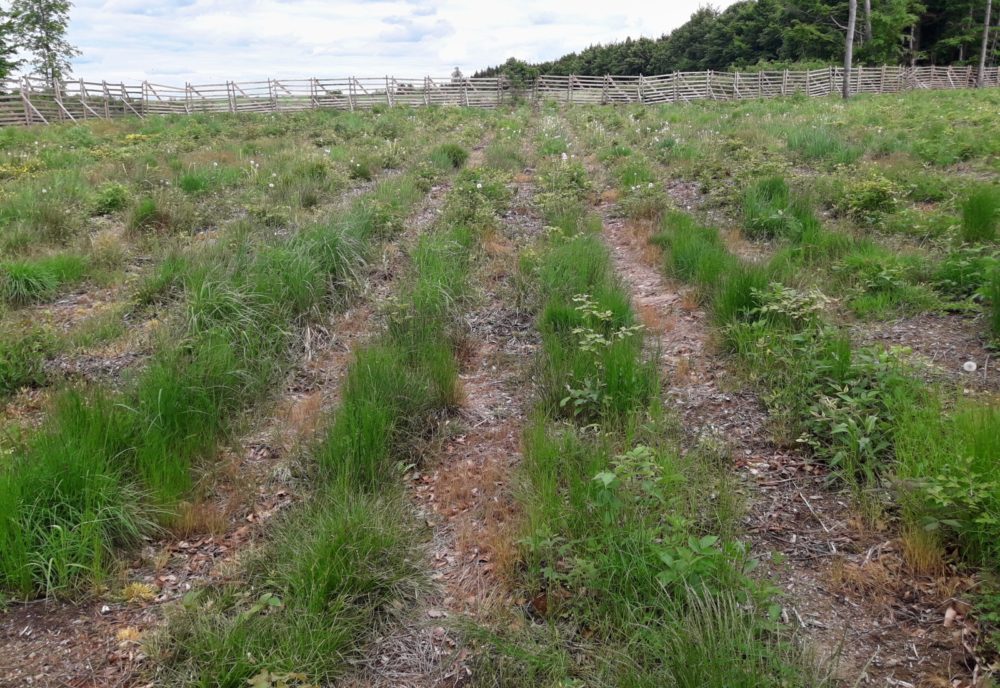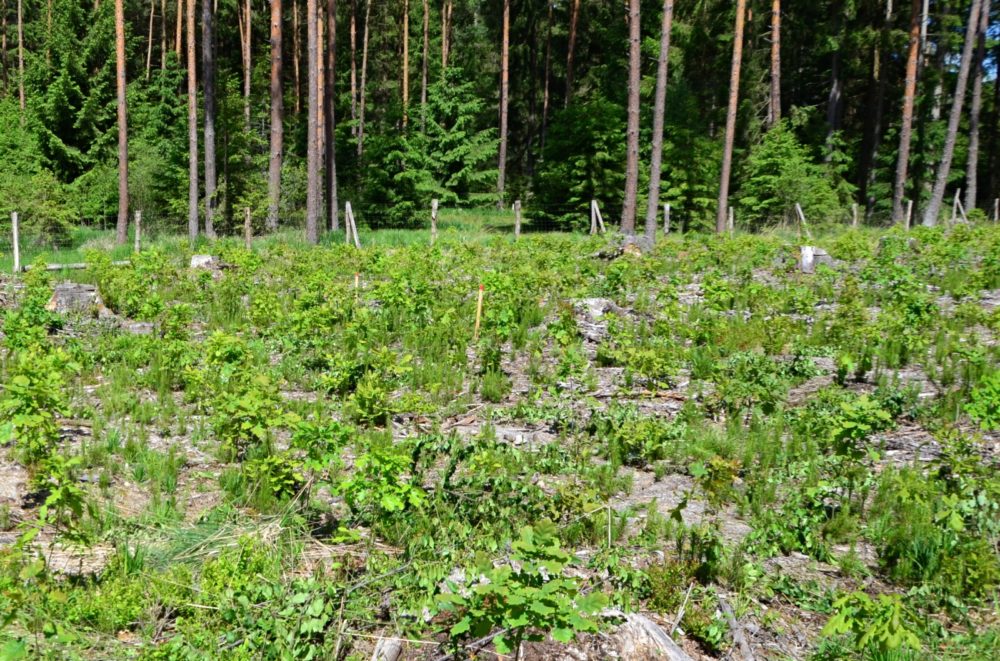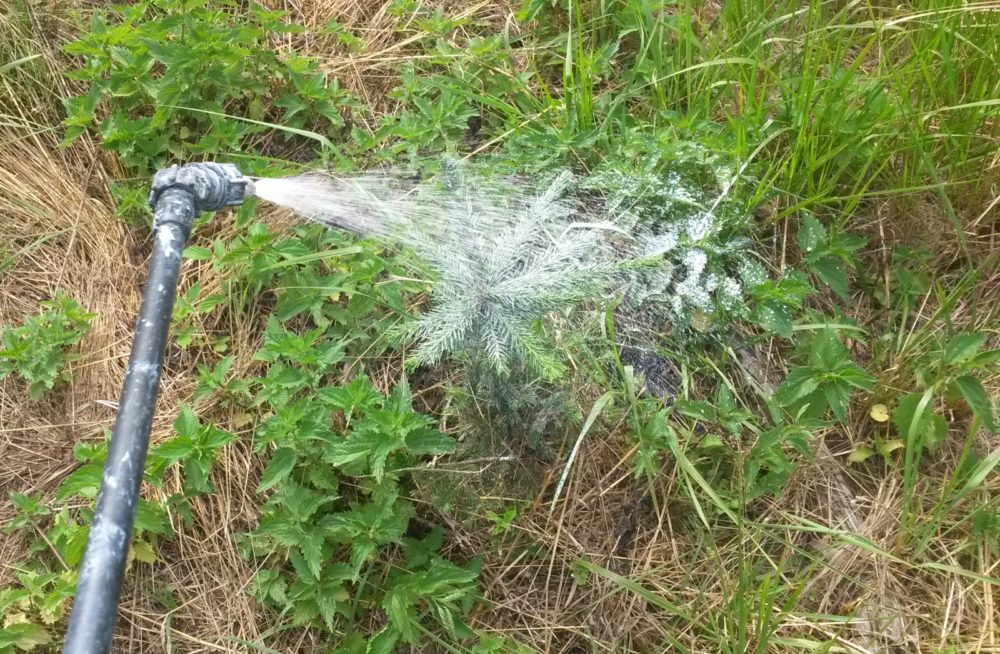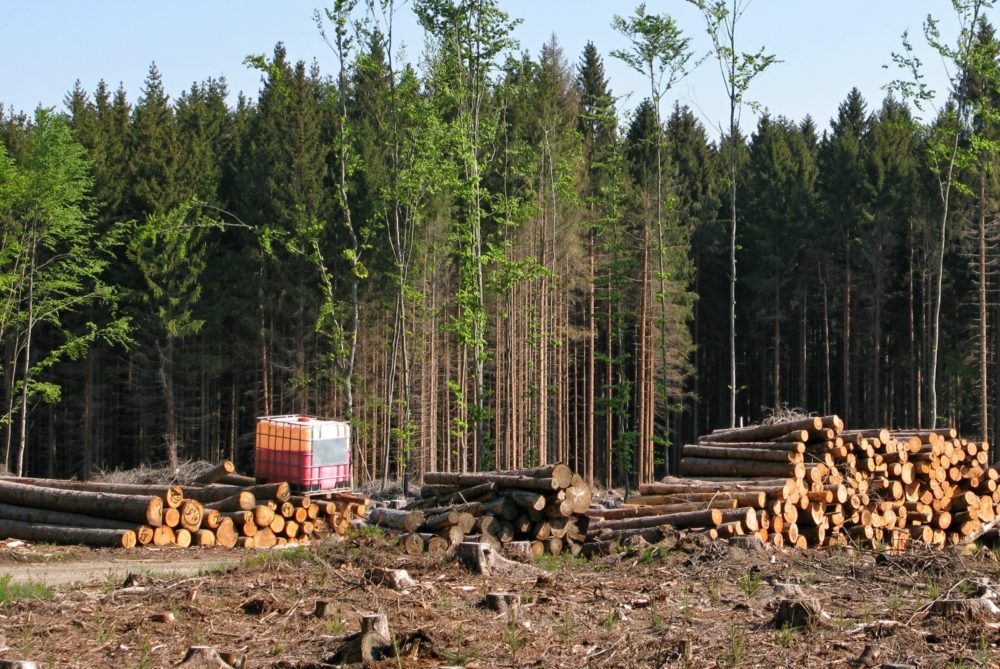Plant protection products are useful helpers in forestry
In forestry, there is the problem with the lack of people to work in the forest getting worse and worse. It is a question of few qualified workers and graduates of forestry schools. At the beginning of the 90s of the 20th century, almost 60,000 people worked in forestry, while it was only 13. 630, in 2021. Small owners take care of their forests alone with their families. But they also need specialist knowledge and sometimes specialist staff.
 One of the options for managing the growing volume of cultivation and mining work during the liquidation of the large-scale bark beetle calamity, it is further rationalization and mechanization of work, particularly, especially as for deployment of harvester use, and the use of natural processes, i.e. a bigger support for natural rejuvenation at the expense of artificial renewal.
One of the options for managing the growing volume of cultivation and mining work during the liquidation of the large-scale bark beetle calamity, it is further rationalization and mechanization of work, particularly, especially as for deployment of harvester use, and the use of natural processes, i.e. a bigger support for natural rejuvenation at the expense of artificial renewal.
Photo: Demonstration of the use of chemical products to protect planted trees from weeds. FGMRI (VÚLHM) archive
But it is not always possible. Especially when caring for new plantings on calamitous clearings, natural processes are often against the survival of small trees and we must help them. Last year alone, over 50,000 ha were reforested. In the last three years, it is approximately 140,000 ha, which has to be cared for and protected from pests and adverse influences for many years. Tens of thousands hectares of planted forests will be added to them every year.
Forest owners and foresters restore forests with a more varied species composition, with more deciduous trees than conifers. Such forests should be more resilient and better adapted to climate change in decades to come.
But now, at the very beginning, these forest stands are, on the contrary, much more sensitive to extreme weather fluctuations, and damaged by animals, insects, and fungi. They are troubled by heat and drought in clearings, they are suffocated by weeds (tall grass, raspberries, brambles, and other herbs), and animals nibble on them as a delicacy.
To manage such a situation, foresters need effective aids, and these include chemical preparations for plant protection and professionally qualified workers who know how to apply them correctly.
 Photo: Clearing area with planted valuable deciduous tree species, which must be protected from weeds and animals, FGMRI (VÚLHM) archive
Photo: Clearing area with planted valuable deciduous tree species, which must be protected from weeds and animals, FGMRI (VÚLHM) archive
The general campaign against chemicals in agriculture and the ordering to reduce the chemical agents of various kinds used in the fields also significantly affected forestry. At the same time, there is a big difference in their use by farmers and foresters, mainly in concentration and intensity.
Plant protection products (PPPs) have been a common part of forest protection, including currently applied integrated forest protection, for approximately one hundred years, and during that time their active substances, methods of use, and impacts on forest ecosystems have evolved.
This development aimed to make the PPPs application as environmentally friendly as possible. They are used in low concentrations on limited areas (clearings) for a maximum of five years, while they are usually applied only once a year and once, without subsequent repetition on the same area.
In connection with Regulation (EC) No. 1107/2009 of the European Parliament and Council, the ecotoxicological properties of all active substances have been re-evaluated for a long time, based on their impact on individual components of the environment. This leads gradually to the termination of the authorization to use several active substances. Many of them are still in the evaluation process, but it is clear that the “Sword of Damocles” hangs over them and that their license may be terminated sooner or later.
PPPs based on natural substances, such as the oils of various herbs, are becoming more and more popular. Because this process takes place only within the European Union, we lose our competitiveness with the rest of the world, especially in classic agriculture, but at the same time, we threaten the development, composition, and existence of forests as a source of renewable ecological raw material for many industries.
 Photo: application of repellent to protect seedlings from the taste of wild animals, FGMRI (VÚLHM) archive
Photo: application of repellent to protect seedlings from the taste of wild animals, FGMRI (VÚLHM) archive
One of the demonized active substances is glyphosate, used in herbicides. The problem was the potential carcinogenicity of the product. Based on the pressure of public opinion, strongly supported (initiated) by environmental organizations such as Greenpeace, the effects of this active substance on human health were evaluated.
The European Food Safety Authority (EFSA), as well as the FVO/WHO Joint Panel on Pesticide Residues (Food and Veterinary Authority / World Health Organization), have publicly declared that existing studies do not indicate carcinogenic properties of this active substance.
On the other hand, in 2015, the International Agency for Research on Cancer at the WHO included it among substances that are probably carcinogenic. However, in 2016, glyphosate was already removed from this list again and for good! Despite this, its short-lived inclusion on the list in 2015 is still a strong argument against its use.
Glyphosate herbicides used to control weeds in clearings and protect young trees have been helping foresters for decades. There is currently no substitute for them. Ideas of returning to archaic methods of weed control, such as manual weeding or trampling, are unrealistic due to the lack of manpower. So there is a real danger that the trees planted with great effort will be suffocated in the coming years due to the action of natural processes – the growth of weeds.
Large areas of afforested clearings are ideal for cloven-hoofed animals, which cause great damage and destroy the work of foresters. Protection against it is possible in three ways – reduce its numbers, build kilometres of fences, use POR – various repellents, repellents that make the trees unpalatable to animals.
But proven active substances in repellents are now banned and there is no adequate substitute for them. So we only prepare a richly laid table full of species-variegated deciduous tree species for the game purposes. And the animal is very curious about what news has appeared in the forest – so it takes a bite and tastes it. Here we have another natural process that, if left untreated, threatens the lives of small trees.
We can also add various small rodents, voles, and mice, to large hoofed animals. Products called rodenticides are used to protect trees against them. Several proven ones are already on the blacklist. At the same time, deciduous trees are an attractive food for many rodents. Due to the ability of rodents to breed on trees, another destructive natural process will strike.
The situation with plant protection products in forestry is very serious, in some cases even critical.
 Photo: Liquidated bark beetle outbreak with the need to chemically clean the felled trees, FGMRI (VÚLHM) archive
Photo: Liquidated bark beetle outbreak with the need to chemically clean the felled trees, FGMRI (VÚLHM) archive
The most critical situation is in the area of insecticides – agents for fighting against bark beetles. The possibility of applying the most widely used insecticide with the active ingredient alpha-cypermethrin ended at the end of 2022. For the year 2023, some of these preparations were granted an exemption for 120 days, and only until stocks are used up.
This narrows the spectrum of insecticides that can be used to clean bark wood and treat coniferous plantations against damage by the hornworm to only two active substances – deltamethrin and cypermethrin. Both are being reassessed and their futures are uncertain. Together with the ongoing bark beetle calamity, ending their use would be downright catastrophic.
Foresters are not able to ensure the sanitation of the necessary volume of bark wood using mechanical methods. Even in the case of continued use of both active substances, the question is whether it is possible to “quickly” increase the import of the necessary volume of insecticides with these active substances – production is planned for approximately 2-3 years ahead.
This is just a small sample of the problems associated with the use of plant protection products that are currently troubling foresters and forest owners. They are fighting against the bark beetle calamity and at the same time, they are already reforesting or in the coming years they will reforest tens of thousands of hectares of clearings and they will try to keep small trees alive despite all the hostile natural processes that will have the opposite effect.
For more information on the risks associated with the potential discontinuation of some forest protection products, see the 2023 Forest Service Newsletter, downloadable here.
Prepared by Ing. Jan Řezáč, FGMRI (VÚLHM, v. v. i.), e-mail: rezac@vulhm.cz
Introductory photo: Extreme density of modified poisoned trapping devices on bark beetles, FGMRI (VÚLHM) archive
